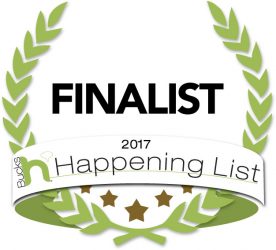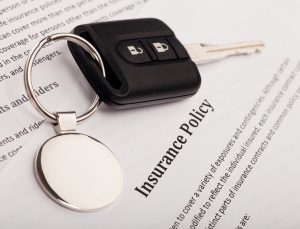NORRISTOWN, Pa. (May 10, 2017) – High Swartz LLP, a full-service law firm with offices in Norristown and Doylestown, Pennsylvania, is pleased to partner with the Main Line Art Center. High Swartz was a sponsor of the Main Line Meets Monte Carlo gala and fundraiser for the Main Line Art Center on April 29.
 Inspired by the Golden Age of Grand Prix racing and the glamourous atmosphere that surrounds it, the party kicked off the Spring Gala Exhibition, which opened to the public April 30 and runs through June 3. The Grand Prix Gala and art sales from the Spring Gala Exhibition support Main Line Art Center’s programs, including its award-winning Accessible Art programs for children and adults with disabilities.
Inspired by the Golden Age of Grand Prix racing and the glamourous atmosphere that surrounds it, the party kicked off the Spring Gala Exhibition, which opened to the public April 30 and runs through June 3. The Grand Prix Gala and art sales from the Spring Gala Exhibition support Main Line Art Center’s programs, including its award-winning Accessible Art programs for children and adults with disabilities.
During the Grand Prix Gala, guests enjoyed an exclusive first look at the Spring Gala Exhibition featuring a wide range of stunning 2- and 3-D artwork in a variety of styles and price points. Juried by Ekaterina Popova, international artist and publisher of Create! Magazine, the exhibition features works by more than 100 professional artists from the region. Committed to making art accessible and the art-buying process easy and fun, the Spring Gala Exhibition invites everyone – from the next-generation collector or art-buying novice to the seasoned collector – to fall in love with a work of art and make it their own.
The Spring Gala Exhibition and Grand Prix Gala: Main Line Meets Monte Carlo are supported by Lead Partner, RDS Automotive Group; Pioneer Partner, Joshua’s Catering; as well as Catalyst Partners, The Bryn Mawr Trust Company, Conservest Capital Advisors Inc., High Swartz LLP, The Shipley School, All Around Entertainment, Beautiful Blooms, Beacon Pointe Wealth Advisors, and Wendy and Mort Branzburg. Main Line Today is the official Media Partner.
The Spring Gala Exhibition is free and open to the public. Main Line Art Center’s galleries are open Monday through Thursday from 10 a.m. to 8 p.m. and Friday through Sunday from 10 a.m. to 4 p.m. A free public Artist Reception and Sensory Garden Party will be held on Saturday, June 3 from 1 to 4 p.m. and features family-friendly art activities, theater performances, a children’s book reading, live art experiences, and more. For details visit www.mainlineart.org.
Main Line Art Center is the community’s home to discover, create, and experience visual art. The mission of Main Line Art Center is to inspire and engage people of all ages, abilities, and economic means in visual art through education, exhibitions, and experiences. Committed to increasing the visibility and accessibility of art, the Art Center presents innovative exhibitions and events in the community, including Panorama: Image-Based Art in the 21st Century, a Greater Philadelphia-wide celebration of the photographic image and digital media. Main Line Art Center’s educational offerings for all ages, abilities, and economic means span from traditional to contemporary, and are all held to the highest level of excellence. In 2015, Main Line Art Center received the Commitment to Cultural Access Award from Art-Reach for the Center’s Accessible Art Programs for children and adults with disabilities, now in their 52nd year. Additionally, the Art Center grants over $12,000 in need-based scholarships annually. Last year, Main Line Art Center engaged 21,000 people through classes, exhibitions, and Summer Art Camp, and touched the lives of over 78,000 through Exhibitions in the Community and festivals across the Philadelphia area.
High Swartz LLP is a general practice law firm serving clients in the Delaware Valley and throughout Pennsylvania from offices in Norristown and Doylestown. Established in 1914, High Swartz serves the needs of businesses, municipalities, government entities, nonprofits and individuals. With offices in Bucks County and Montgomery County, the full-service law firm provides comprehensive counsel and legal support to individuals and business entities of all sizes across a broad spectrum of industries throughout Pennsylvania and New Jersey. For more information, go to www.highswartz.com.
# # #
 NORRISTOWN, Pa. (May 25, 2017) – High Swartz LLP, a full-service law firm with offices in Norristown and Doylestown, Pennsylvania, is pleased to announce that it has been named a finalist in the 2017 Bucks Happening List.
NORRISTOWN, Pa. (May 25, 2017) – High Swartz LLP, a full-service law firm with offices in Norristown and Doylestown, Pennsylvania, is pleased to announce that it has been named a finalist in the 2017 Bucks Happening List.



 Inspired by the Golden Age of Grand Prix racing and the glamourous atmosphere that surrounds it, the party kicked off the Spring Gala Exhibition, which opened to the public April 30 and runs through June 3. The Grand Prix Gala and art sales from the Spring Gala Exhibition support Main Line Art Center’s programs, including its award-winning Accessible Art programs for children and adults with disabilities.
Inspired by the Golden Age of Grand Prix racing and the glamourous atmosphere that surrounds it, the party kicked off the Spring Gala Exhibition, which opened to the public April 30 and runs through June 3. The Grand Prix Gala and art sales from the Spring Gala Exhibition support Main Line Art Center’s programs, including its award-winning Accessible Art programs for children and adults with disabilities.
